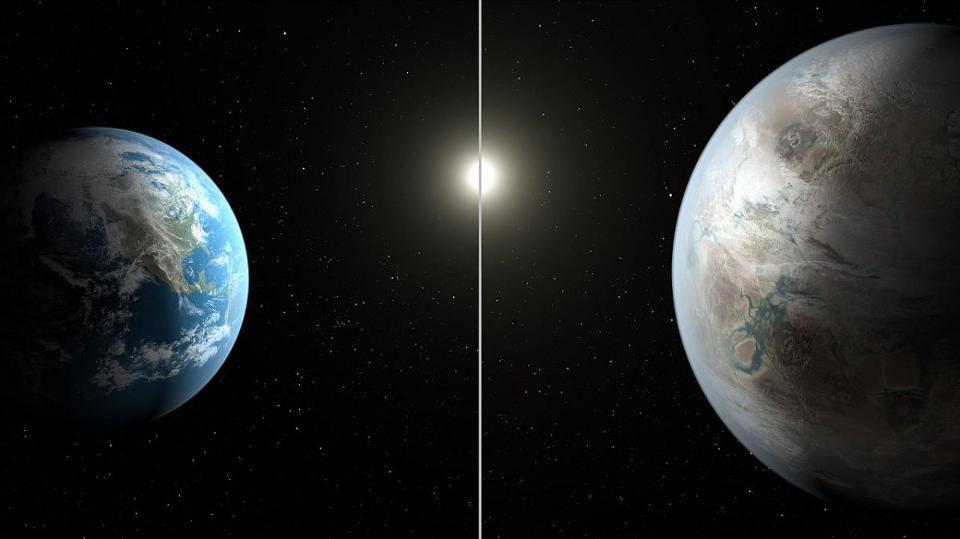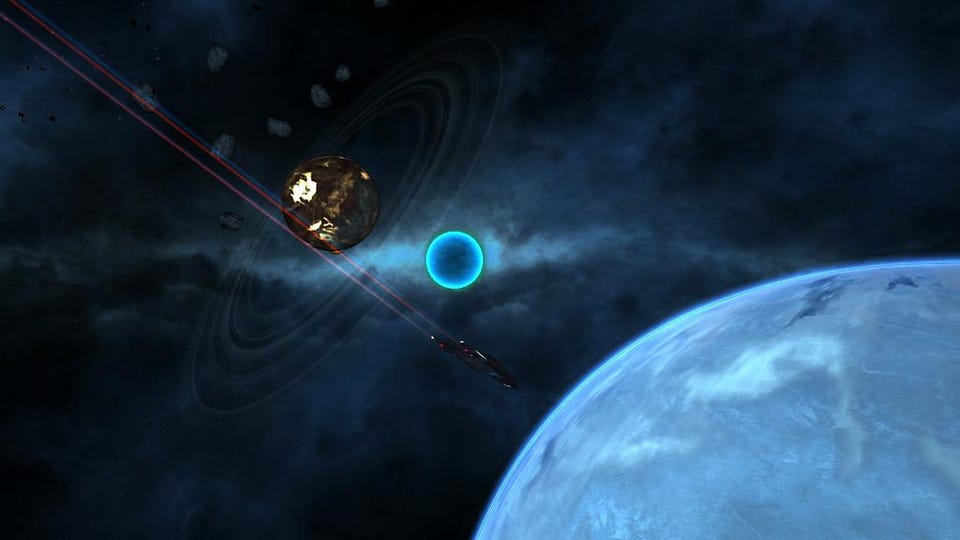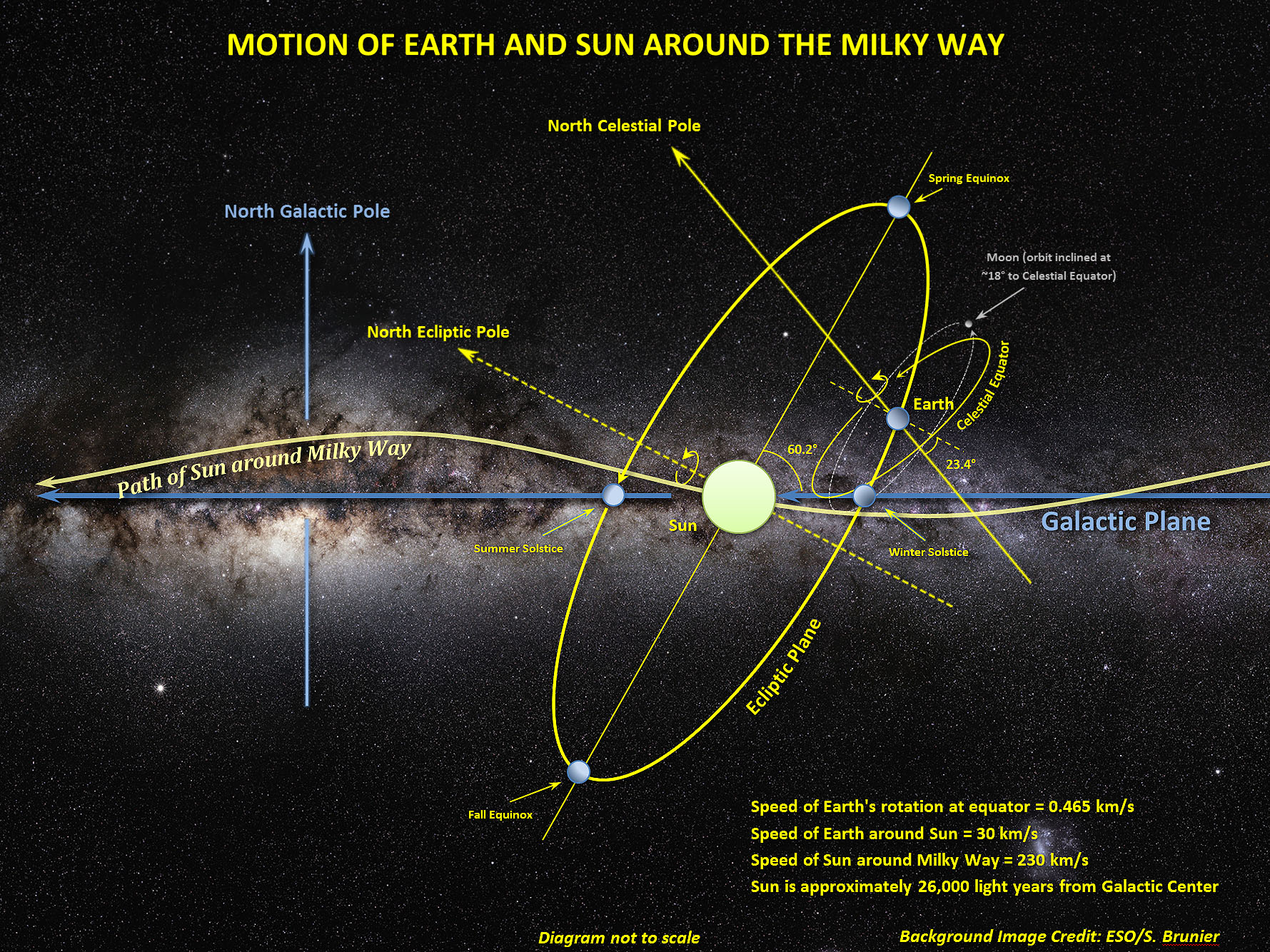Here’s what the first 5000 exoplanets have taught us
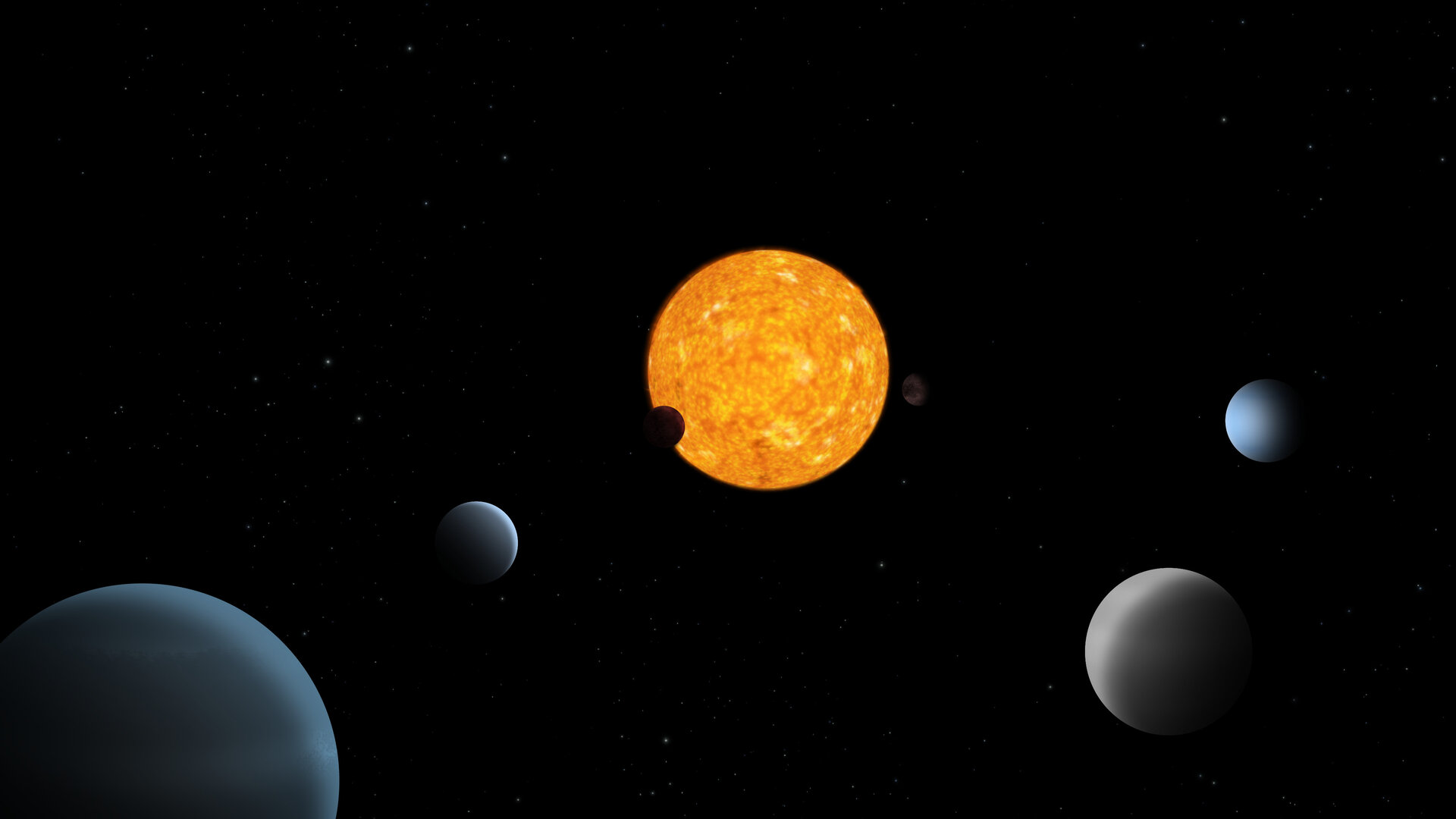
- The very first planets beyond our own Solar System were only discovered in the early 1990s: just 30 years ago.
- Today, we know of more than 5000 confirmed exoplanets, or extra-solar planets, discovered via four different, independent methods.
- Extrapolating over the entire galaxy, that likely translates into trillions of planets at minimum. Here’s what else we’ve learned, plus what remains to be discovered.
Mark it down: as of March, 2022, we’ve passed a remarkable milestone in discovering the Universe. For innumerable millennia, humans and our ancestors looked up at the sky, wondering at the seemingly limitless points of light glittering in the heavens. While many intuited that they might be similar to our Sun, except located a tremendous distance away, nobody knew whether our Solar System was something special. Did the other stars in the Universe have planets orbiting them? If so, what percent of them had planets? How many did they have? And were the planets like ours, or were they vastly different?
Just thirty years ago, humanity was beginning to uncover the answers, as we started to discover planets in orbit around stars other than our own. At last, through a combination of multiple different methods — the radial velocity method, timing measurements, the transit method, and gravitational microlensing — we’ve surpassed 5000 known exoplanets: planets located beyond our own Solar System. As is often the case, these discoveries have been tremendous and have answered some of our deepest questions about the cosmos. Nevertheless, even deeper ones now remain. Here’s what we’ve learned so far.

What is an exoplanet?
In the early 1990s, two different methods, at almost the same time, started to reveal planets that were located beyond our own Solar System. Through measuring the periodic pulses coming from a neutron star, we could see that the pulses would regularly speed up, then return to normal speed, then slow down, and then return to normal speed again, over and over. The fact that these pulses changed with the same period and amplitude told us that there were massive companions in these pulsar systems, and by measuring the pulse timing, we could infer the masses of these companions: they were definitively planets.
Similarly, we could observe the periodic redshifting and blueshifting of the light from individual stars, which also revealed the presence of massive planets, which “tugged” on their parent stars and caused them to appear as though they were wobbling in space. Although both of these methods were indirect — meaning they revealed the presence of the planet, but weren’t capable of measuring the planet itself directly — they were robust. After referring to them as extra-solar planets for perhaps ~15 years, hundreds of discoveries later, the term “exoplanet” caught on. Today, we know of more than 5000 exoplanets, and the rest is history.
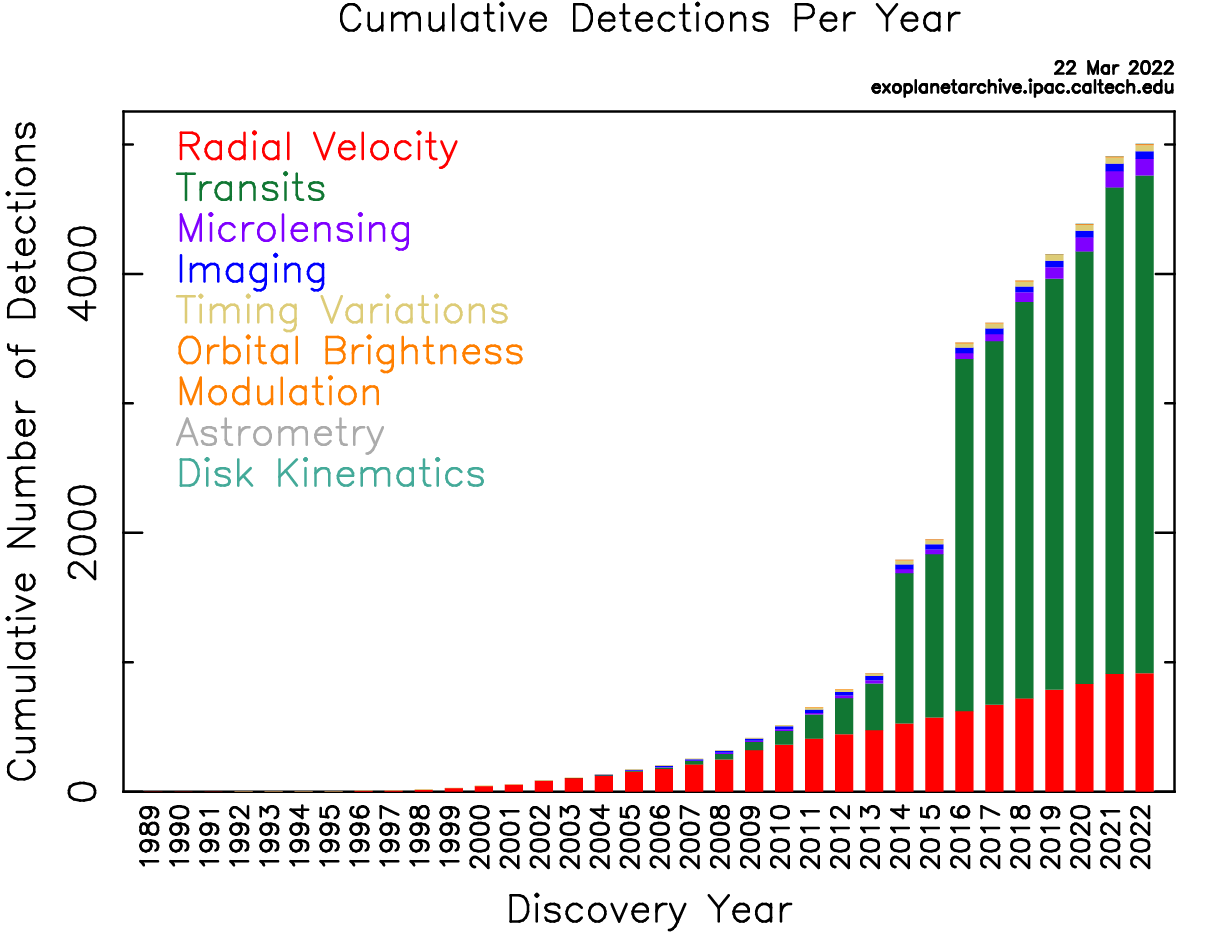
What are the known methods of exoplanet discovery?
All told, we have five methods that have successfully revealed the presence of exoplanets, as well as various properties that they possess.
- Transit timing: this only works for stars that emit regular, periodic signals — like pulsars — but the more regular these signals are, the more easily we can detect variations in the arrival time of those pulses. If these pulsars, stellar corpses themselves, have planetary companions orbiting them with a smaller period than the amount of time we observe them for, transit timing can reveal them.
- Radial velocity: also known as the stellar wobble method, is what occurs when an unseen planet and its parent star orbit their mutual center of mass. The planet doesn’t just make an elliptical orbit, the star also makes one, albeit one much smaller and much slower on account of the difference in masses between the two. Only when the planet is massive enough and close enough to the parent star can the exoplanet be detected.
- Direct imaging: although this is arguably the most exciting one, since it’s the only one where you can directly collect photons from the exoplanet itself, it’s an incredibly difficult measurement to make. Only the exoplanets that are large and bright enough, intrinsically far away enough from their parent star to not get lost in the glare, and close enough to Earth to be seen with our telescope, can be seen.
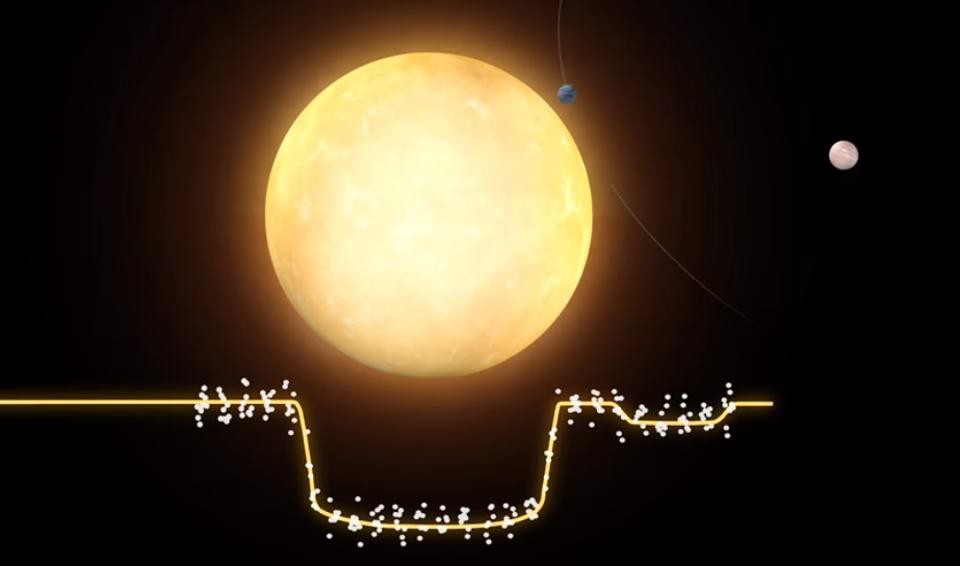
- Transit method: this is the most successful exoplanet discovery method of all, and yet, the very first transiting exoplanet wasn’t found until 2004. The idea is that we can measure the light coming from a stellar system over time, and if we get lucky enough that one of the planets in the stellar system passes in front of the star relative to our line-of-sight, we’ll observe a slight “dip” in the apparent brightness of the star. If the dip recurs with the same magnitude repeatedly, with the same time interval between repeat dips, we can reveal the presence of a planet. This only works, with present technology, for large enough planets that orbit quickly enough to observe multiple transits, and only when the alignment between the star, planet, and our line-of-sight is practically perfect.
- Microlensing: this occurs when you look at a distant star, but a massive object passes between the star and you, the observer. Unlike the transit method, which only works when the exoplanet is very close to the parent star, microlensing is based on the fact that the presence of a mass curves space itself, which impacts the light from all background objects. Instead of blocking a portion of the light, the mass acts like a lens, and briefly amplifies and distorts the background light, causing a brightening that reveals the mass and (angular) motion of the object. This can find not only exoplanets that orbit stars, but free-floating, rogue, or orphaned planets.
Each of these methods has their own biases, but all of them have revealed planets, and have the potential to reveal many more.
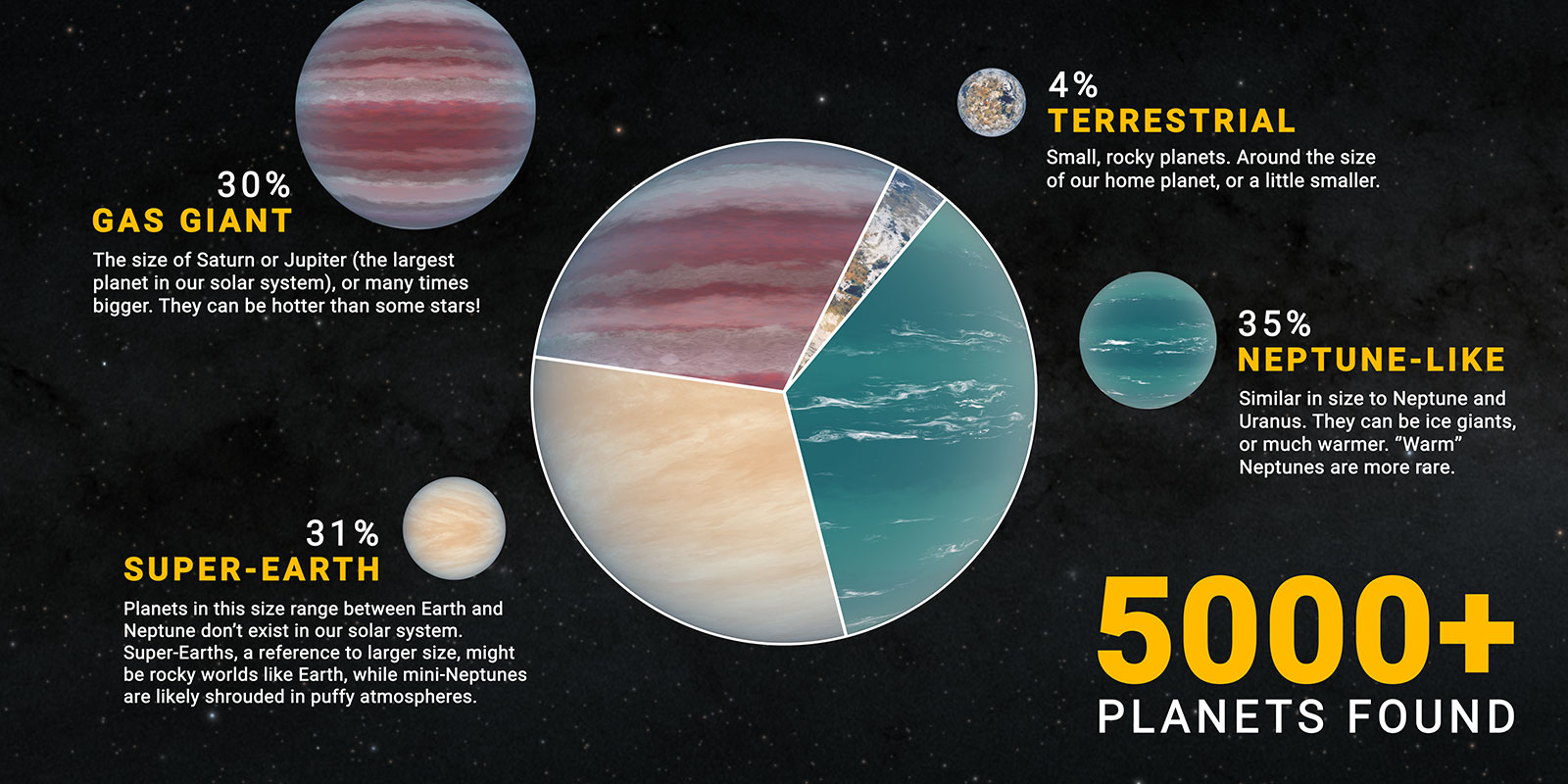
What types of planets are out there?
This is where things get very interesting! We once thought that our Solar System was typical, and that planets would come in either two or three categories. We knew there would be rocky, terrestrial planets, similar to the four inner planets in our Solar System. We also knew that there would be gas giant planets, like the four outer planets, with some dividing them into the sub-categories of true giants, like Jupiter, and ice giants, like Uranus, Neptune, and (according to some classifications) Saturn.
But now that we have 5000+ confirmed planets, with more than another 5000 candidate planets awaiting confirmation, we can categorize these planets and see what’s out there. We’ve learned that the majority of discovered planets — which, yes, are still biased towards higher masses, smaller orbital periods, and serendipitous orientations relative to our line-of-sight — fall into an in-between state: more massive than Earth but less massive than Neptune or Uranus, with radii that fall in between those two categories. Most of these worlds are likely mini-Neptunes rather than super-Earths, but more research is needed before we can firmly categorize these.
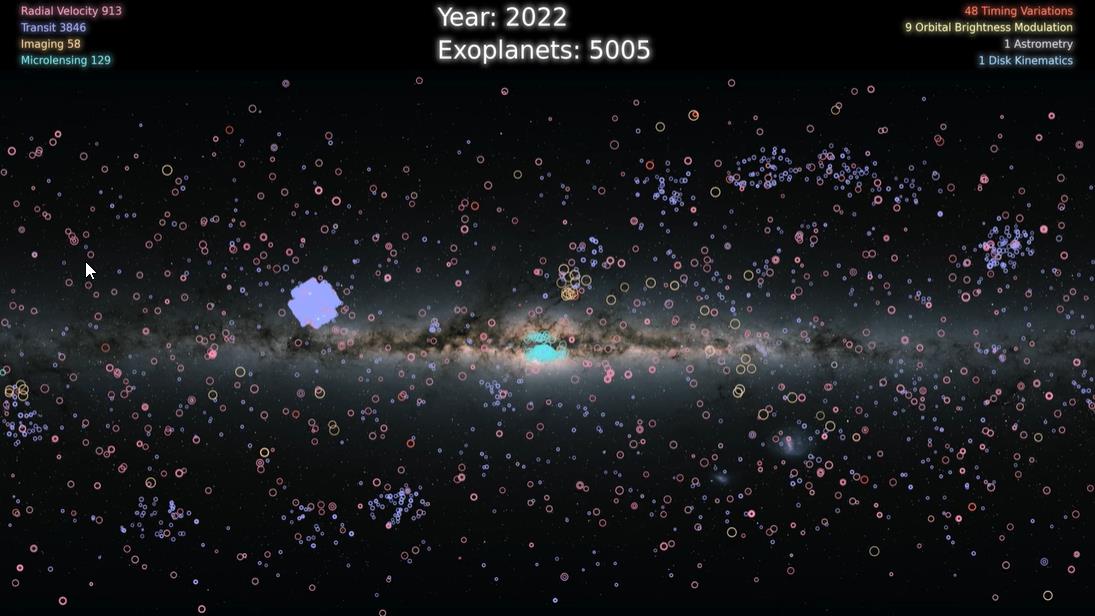
Where are the exoplanets found?
If you look at the above visual, which shows where the known exoplanets are located, you can see three odd features. For the most part, the planets look scattered across the sky, but there’s a large cluster of planets in what appears to be a very heavily bolded “+” sign. That’s due to the original Kepler mission, which focused on one patch of sky that looks down a spiral arm of our galaxy. It imaged around 150,000 stars at once, continuously, for a period of three years; about half of the known exoplanets fall in this region.
There are also smaller “clusters” of exoplanets that transit, and those were discovered by the much shorter-period searches performed by the K2 and TESS missions, the latter of which is still ongoing.
Finally, there are a significant number of planets located towards the galactic center; these are relatively recent and were discovered via microlensing. In reality, exoplanets should be everywhere, but we’re biased towards the locations where we’ve taken the best, most long-duration observations. The map of the known exoplanets should not be representative of where planets actually exist; when we take those biases into account, we think that practically every stellar system should possess exoplanets of their own, with a “lower limit” of about 80% of systems requiring one.
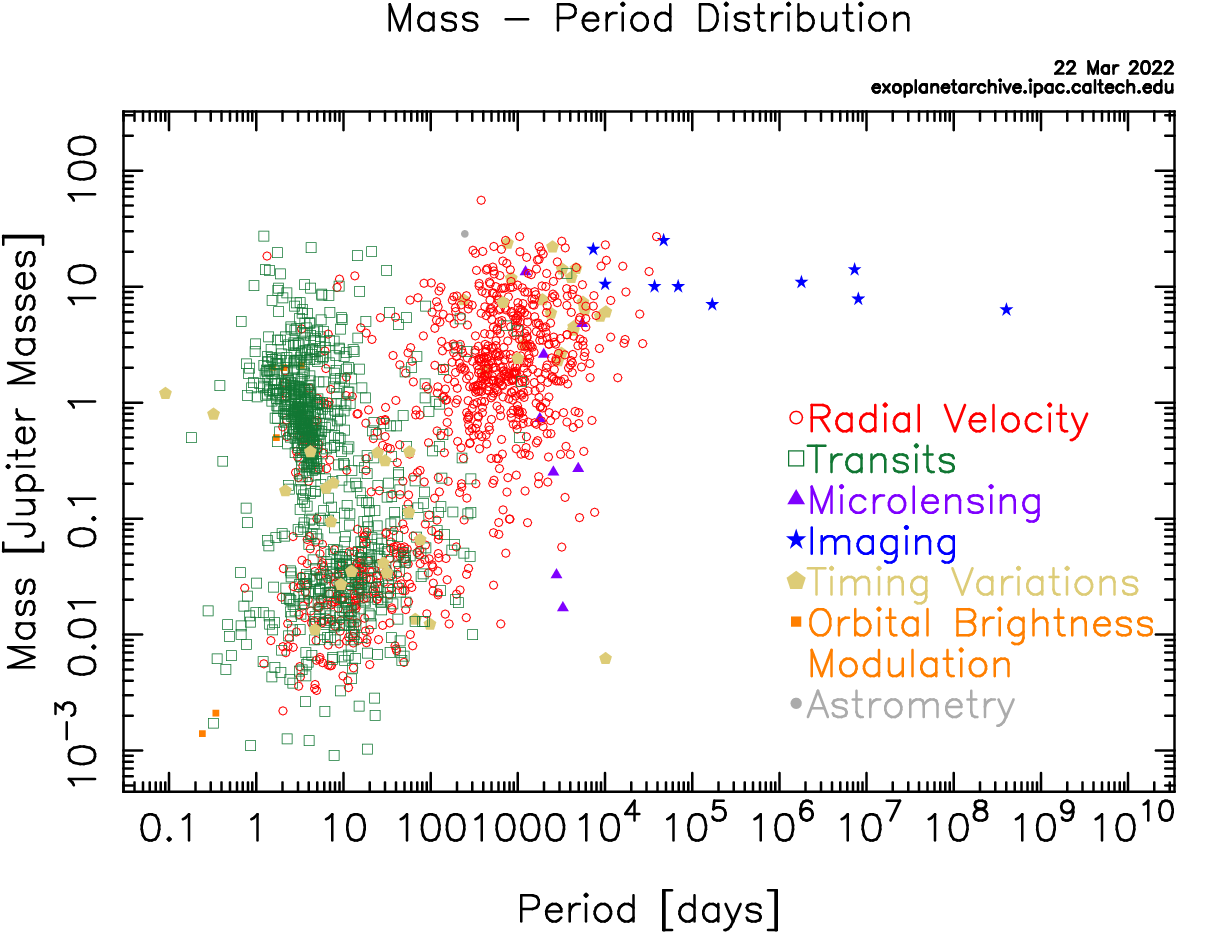
How many planets do we think are out there?
This, believe it or not, is actually one of the more challenging questions out there. It’s not because there’s a tremendous uncertainty in the number of stars with planets or even how many planets are found in each stellar system, on average. Yes, there are uncertainties in both of those, as our ignorance about the outer parts of planetary systems is tremendous; we’d need to either improve direct imaging technology tremendously or make much longer-duration, more sensitive observations of larger numbers of systems to take an effective census of planets using the radial velocity or transit methods. In reality, it’s safe to say that the average stellar system has between 4 and 20 exoplanets: a relatively small uncertainty.
But what about the planets that aren’t located in stellar systems? While most systems, like our own, are anticipated to have ejected a small number of planets or proto-planets since their formation, we have very little information with respect to how many “failed” stellar systems there are for each one that successfully formed. How many:
- brown dwarfs,
- giant planets,
- ice giants,
- terrestrial-like planets,
- or ice-rich, spheroidal bodies
are out there? Estimates range from “about as many stars” to “a few tens of thousands of times the number of stars,” and only advanced microlensing studies will be able to reveal them.
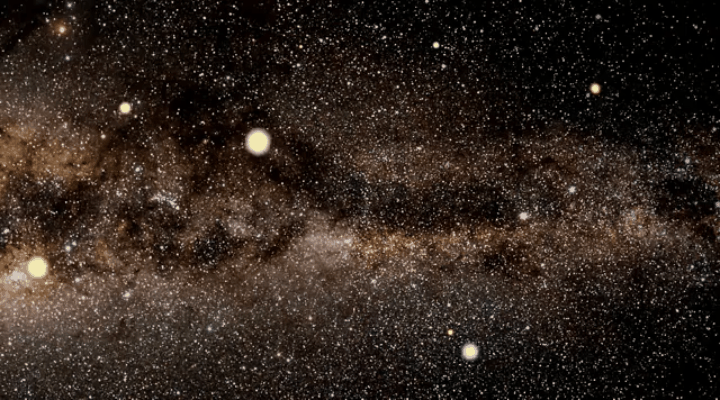
Is our Solar System “typical” in some fashion?
Yes and no. (What a cop-out of an answer, I know.) Our Solar System is typical, likely, in terms of the number of planets we have. But the low-mass end of the exoplanetary spectrum is very poorly probed, as are the population statistics of the outer planets in most planetary systems. However, we’re likely not typical in that we have a series of rocky, terrestrial planets in the inner Solar System, accompanied by more massive, gas-rich planets in the outer Solar System.
The other systems we’ve measured have shown us that giant planets in the inner parts of a planetary system aren’t rare, but exist in substantial abundances. We’ve also seen that these mini-Neptune planets — which represents the overwhelming majority of the exoplanets we’ve (mistakenly) named “super-Earths” — are extraordinarily common, and yet aren’t represented at all in our Solar System. Finally, there are two more truly remarkable ways that we’re not typical: our Sun is brighter and more massive than 95% of stars in the galaxy, and about half of all stars out there are members of multi-star systems.
If we want to know just how typical we are, it’s vital that we understand what’s out there around the more common types of stars, so we can see just how we stack up.
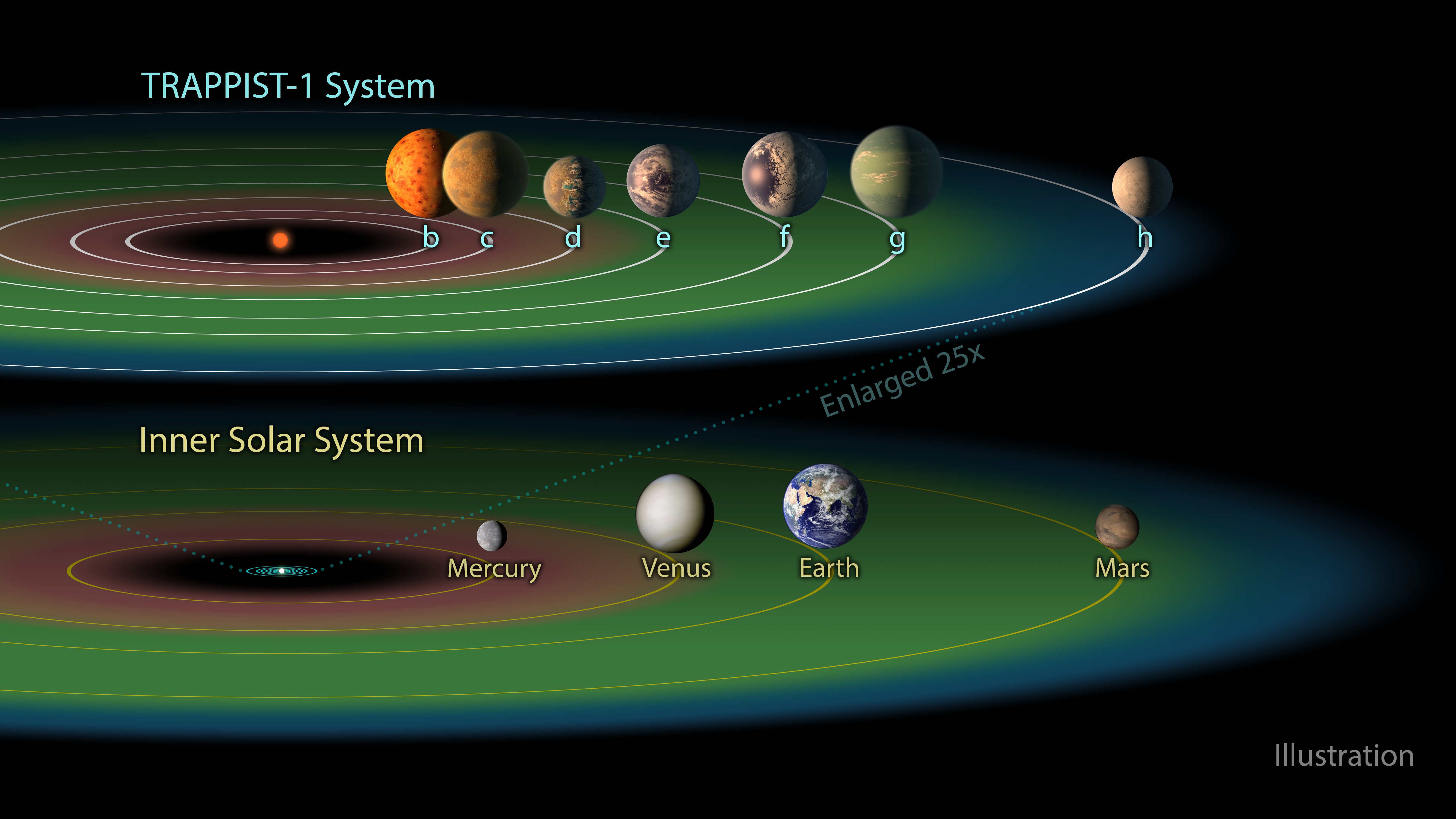
Are any of the 5000 we’ve discovered so far actually inhabited?
Here comes another cop-out answer: we don’t know. Some of them, we believe, are rocky and are likely to possess thin atmospheres, just like Earth. Some of those, we believe, are likely to be at the proper distance from their parent star so that if they’re rich in water, they’re likely to have liquid oceans on their surfaces. And some of those, we believe, may either have possessed or even currently possess similar conditions to those found on early Earth: where life arose more than 4 billion years ago.
But most of the planets we’ve found aren’t rocky, but rather are likely to have thick, volatile gas envelopes. And many of the ones that don’t are likely to be Mercury-like, with no atmosphere at all.
And most of the planets that are rocky have been found around M-class stars: the reddest, coolest stars. Because of the short orbital periods of these planets, they’re sure to be tidally locked to their parent stars, and may have had their atmospheres stripped away entirely by these stars, which flare actively.
Moreover, none of these small planets have had their atmospheres measured, either by direct imaging or via transit spectroscopy. To determine whether there are bio-signatures (or at least bio-hints) on these worlds, we’ll need to overcome those limitations.
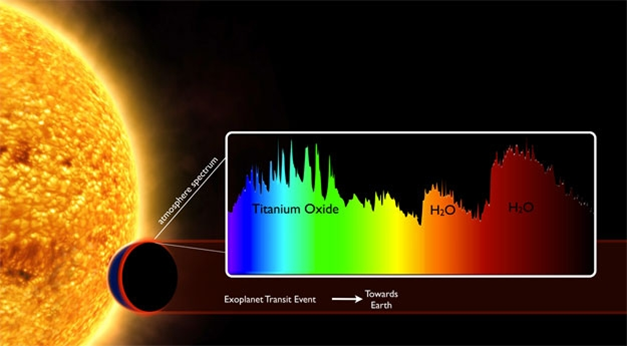
What unanswered questions can we expect to answer in the near future?
Remarkably, the answer is “pretty much every question we’ve already raised.” As telescopes like James Webb, EUCLID, PLATO, the Giant Magellan Telescope, the European Extremely Large Telescope, and the Nancy Roman Space Telescope come online, our capabilities will improve across the board. We’ll be able to measure:
- the atmospheres around smaller planets,
- direct images of planets closer to their parent stars,
- microlensing signals from smaller planets and with smaller magnitudes,
- larger numbers of statistics,
- and smaller radial velocity signals
than ever before. We’ll also be able to learn how low in heavy elements a stellar system can be and still have rocky planets, as well as which planets are “super-Earths” versus “mini-Neptunes.”
As a bonus, have a listen to prior Starts With A Bang podcasts with microlensing expert Savannah Jacklin,
and exoplanet scientist extraordinare Jessie Christiansen.
Best of all, from the combination of atmospheric signals that are revealed via transit spectroscopy and direct imaging, we’ll be sensitive to learning what’s in the atmospheres of our first Earth-sized planets around other stars. Do they have atmospheres? Do any of those atmospheres have molecules like oxygen, nitrogen, water vapor, carbon dioxide, and/or methane? Are there chemical signatures we associate with intelligent creatures, such as chlorofluorocarbons or industrial pollutants?
We have no right to expect that the signatures we’re hoping to find will be abundant in the Universe, but we owe it to ourselves to look to the full extent of our capabilities. After all, the moment we decide that we’ve looked hard enough and that it isn’t worth looking further, that’s the instant we’ve given up on the scientific endeavor of searching beyond the known frontiers.
